SUSDIAM
CORE-FACILITY GDAŃSK UNIVERSITY OF TECHNOLOGY
At the core facility many operations of synthesis and/or processing of diamond in various forms (thin layers, suspensions, powders) are performed. The production line at the Gdańsk University of Technology enables the following processes:
- Deposition of thin electrode layers of micro- and nanocrystalline diamond doped with boron and/or nitrogen on a number of substrates (silicon, glassy carbon, titanium, quartz glass) for optoelectronic, sensory and electrochemical applications. Such electrodes are suitable for subsequent modification enabling selective sensing of a desired substance. The electrodes have already proven useful as detectors of toxins, DNA, proteins, viruses, and more.
-
Preparation of suspensions of nanodiamonds. The team at the Gdańsk University of Technology specializes in creating suspensions of various nanodiamonds:
- detonation nanodiamonds without color centers: size range 5-50 nm; mean size 5 nm;
- high-pressure, high-temperature (HPHT) nanodiamonds: size range 50-1000 nm;
- conductive CVD nanodiamond powders doped by boron;
- deagglomerated HPHT or CVD nanodiamonds with nitrogen-vacancy-nitrogen centers: size range 300 nm – 1400 nm;
- Surface termination of the nanodiamonds may be controlled (oxidized, hydrogenated, carboxylated, graphitized) depending on the pre-processing performed. The range of solvents used as dispersion media includes, but is not limited to: deionized water, dimethyl sulfoxide (DMSO), isopropanol, toluene, ethanol. The concentration of the particles in the suspensions may be tuned from 100 ppm to single percents.
- Optical characterization of nanodiamond suspensions (fluorescence, particle size distributions, zeta potential).
Associated services

As part of the project, was created the establishment of a robust pipeline for reliable production of NDs with narrowly definable parameters. This is be utilized within the project itself, but can be offered externally on a collaborative or pay-for-service basis to academic and commercial institutions. The Laboratory of Materials and Components Synthesis (LIME) at Gdańsk University of Technology has already gained experience in using carbon nanotechnologies in several technology-transfer-oriented projects in a manner similar to the planned project outcome. The built Core-facility is generally available to all interested customers for the supply of developed nanodiamond materials and realized customized services. All interested parties can use the Core-facility after contacting the head of facility or Centre for Knowledge and Technology Transfer GdanskTech. The head of the Laboratory is prof. hab. Eng. Robert Bogdanowicz.
(contact by email: robbogda@pg.edu.pl)
Core-facility nanodiamond products
List of products:
| Number | Brand name | Form of product | Dispersion medium | Type of diamond | Mean size of diamond particles | Concentration of diamond (w/w) | Volume (single package) | Price (PLN NETTO) |
| 1. | QUNND_1 | Liquid suspension | Deionized water | Synthetic, high-pressure high-temperature (HPHT) diamond | 125 nm | 0.1% | 10 ml | Quote |
| 2. | QUNND_2 | Liquid suspension | 2-Propanol | Synthetic, high-pressure high-temperature (HPHT) diamond | 135 nm | 0.1% | 10 ml | Quote |
| 3. | QUNND_3 | Liquid suspension | Deionized water | Synthetic, high-pressure high-temperature (HPHT) diamond | 910 nm | 0.1% | 10 ml | Quote |
| 4. | QUNND_4 | Liquid suspension | Dimethyl sulfoxide (DMSO) | Synthetic, detonation nanodiamond (DND) | 600 nm | 0.1% | 10 ml | Quote |
| 5. | QUNND_5 | Liquid suspension | Deionized water | Synthetic, boron-doped diamond (BDD) synthesized via chemical vapor deposition (CVD) | 85 nm | 0.01% | 10 ml | Quote |
| 6. | QUNND_6 | Liquid suspension | 2-Propanol | Synthetic, boron-doped diamond (BDD) synthesized via chemical vapor deposition (CVD) | 1.4 µm | 0.01% | 10 ml | Quote |
(To quote please contact: robbogda@pg.edu.pl)
Core-facility rules
The rules for the use of the apparatus are in line with the research infrastructure management system under development at GdańskTech. Elements of this system include how to request the execution of research, the appointment of a person responsible for the execution of research, and rules and regulations addressing intellectual property of the results. An element of the system also includes billing for the research performed in the facility.
Regulamin ogólny
Core-facility systems
Workstation no. 1 – CVD diamond growth
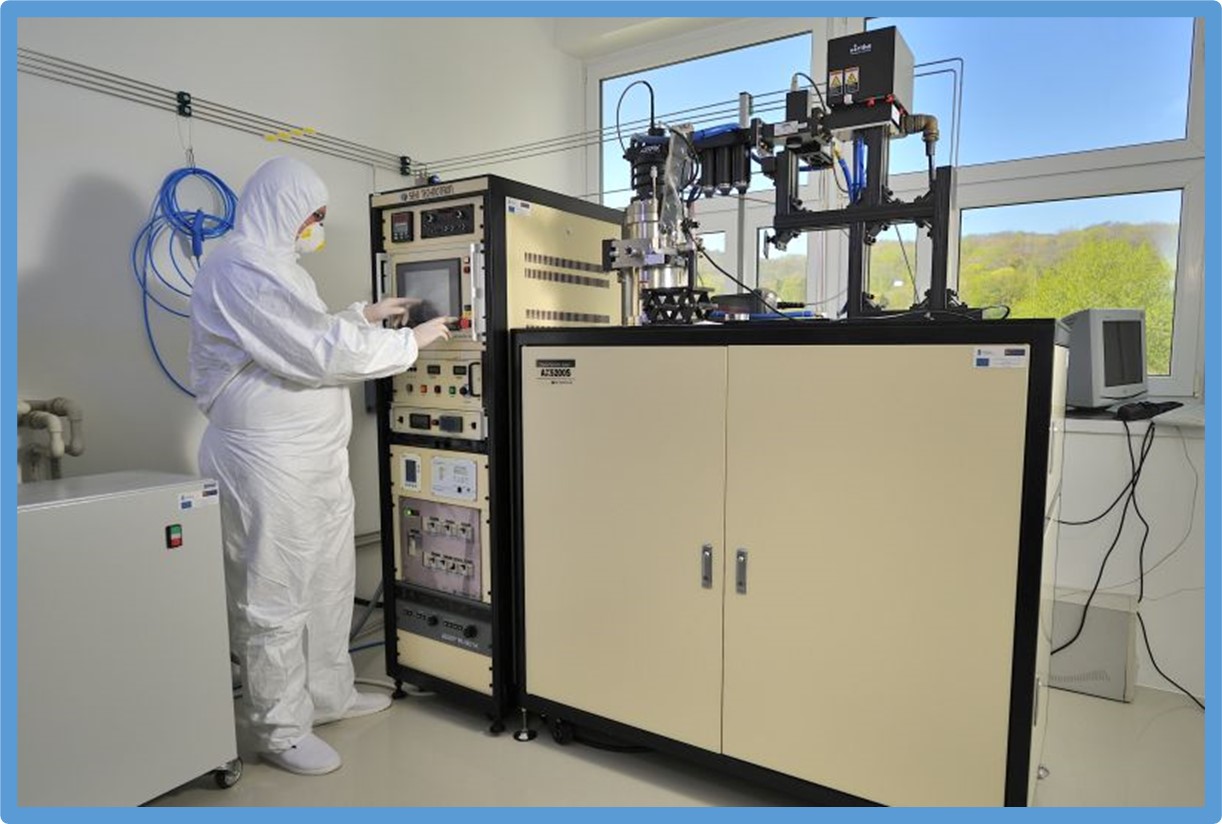
Workstation no. 2– Preliminary preparation of samples
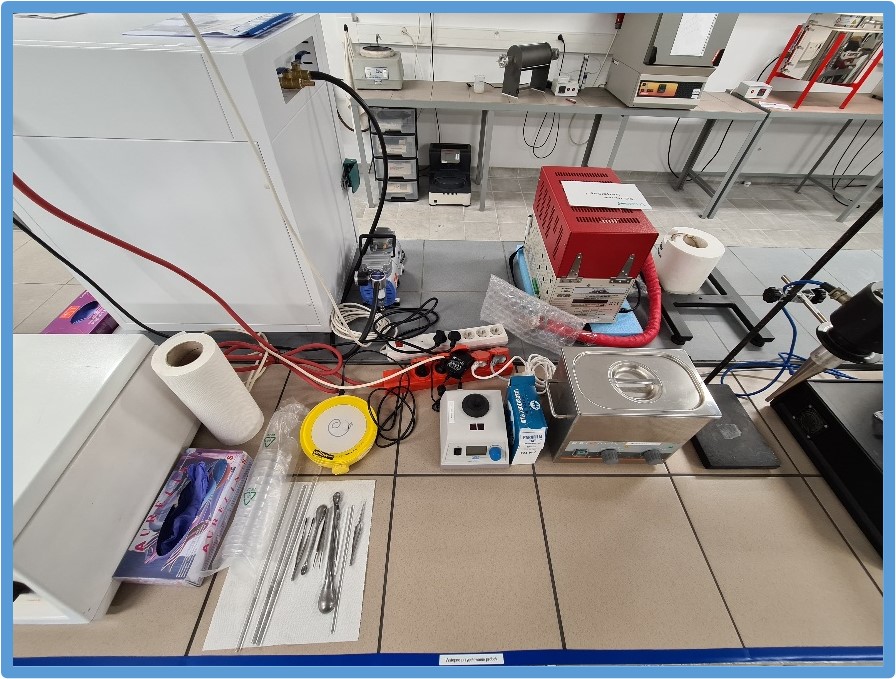
The ultrasonic bath (Sonic-3, Polsonic) is used for homogenising suspensions of diamond particles which are not intended to be crushed using high-power ultrasound. The device is also useful in cleaning and disinfecting laboratory glassware.
The digital vortex mixer (TX4, Velp Scientifica) enables to stir suspensions placed in test-tubes with a speed up to 3000 rpm, and is meant to redisperse particles that have precipitated over time. The centrifuge (MPW-201, Mechanika Precyzyjna) enables to deliberately cause complete or partial precipitation of the diamond particles suspended in the liquids in order to remove/replace the solvent or to take away the particles with the large sizes from the suspensions.
Workstation no. 3 – Mechanical grinding
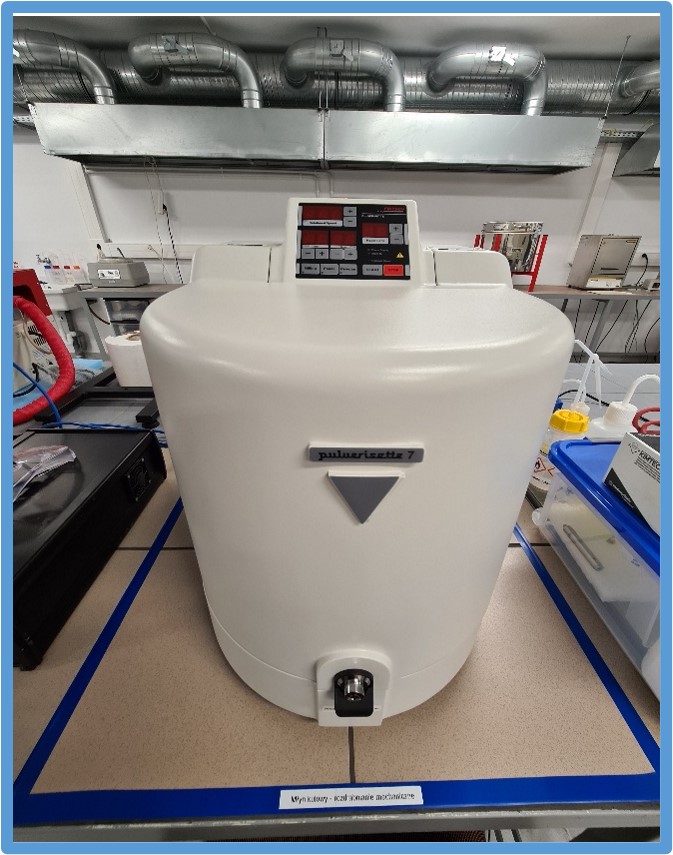
The ball mill (Pulverisette 7 classic line, Fritsch) enables to crush diamonds into powders with a final fineness below 1 μm as a result of collision with grinding balls. Wet grinding in a suitably reactive solvent might allow for a simultaneous disaggregation and functionalization of the diamond particles. The mill is equipped with jars and grinding balls made of the hardest material available on the market – tungsten carbide.
Workstation no. 4 – Ultrasonication
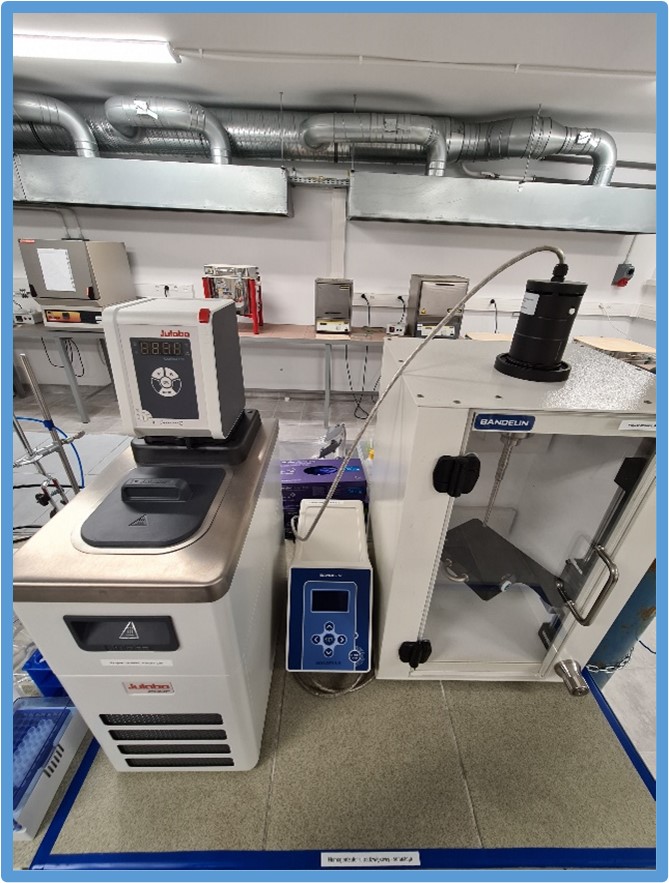
The ultrasonic homogenizer (Sonopuls HD 4200, Bandelin) is used for disaggregation of the diamond particles with high-performance, 20kHz ultrasound. The process may be assisted with an abrasive (most commonly ceramic microbeads, e.g. zirconium dioxide), or the diamond particles may be allowed to be crushed only as a result of collisions between themselves. Depending on the choice of the solvent and additional, chemically active compounds, the process of decreasing the size of the diamond particles may be paired with their functionalization.
The refrigerated – heating circulator (CORIO CP-200F, Julabo) is used to control the temperature throughout disaggregation of the diamond particles. Avoids the effect of overheating and excessive evaporation of the solvent.
Workstation no. 5 – Surface modification
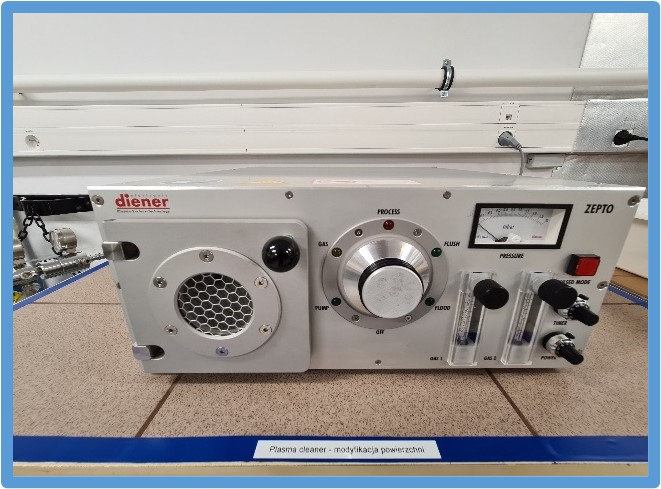
The plasma cleaner (ZEPTO, diener) enables cleaning and termination of diamond surfaces. The 2.6 liter chamber allows for oxygen modification of the diamond surface. The generated plasma RF (13.56 MHz) changes the hydrophobicity of the diamonds and sterilizes them.
Workstation no. 6 – Thermal treatment
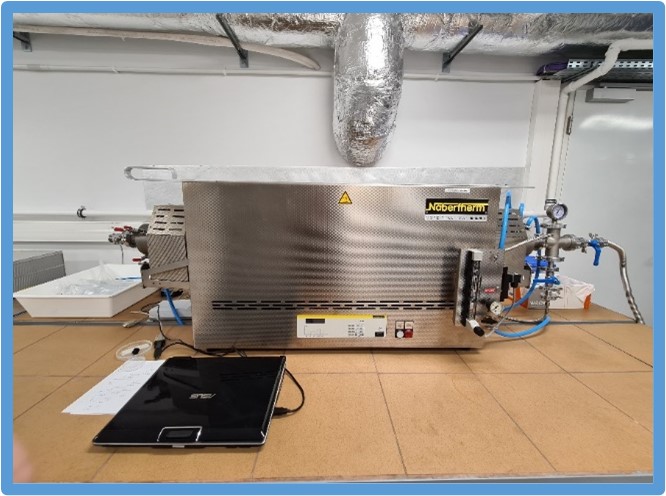
The furnace with SiC rod heating (RHTC 80-450 with vacuum flanges, Nabertherm) is used for high-temperature annealing of the diamond particles. Thermal treatment of the nanodiamonds is an indispensable element of many processes of functionalization (e.g. oxidation, carboxylation). Moreover, it is a vital step in creation of color centers. High temperatures enable vacancies to change their positions in the diamond lattice and form complexes with substitutional atoms, thus creating the fluorescent defects.
Workstation no. 7 – Particle analysis
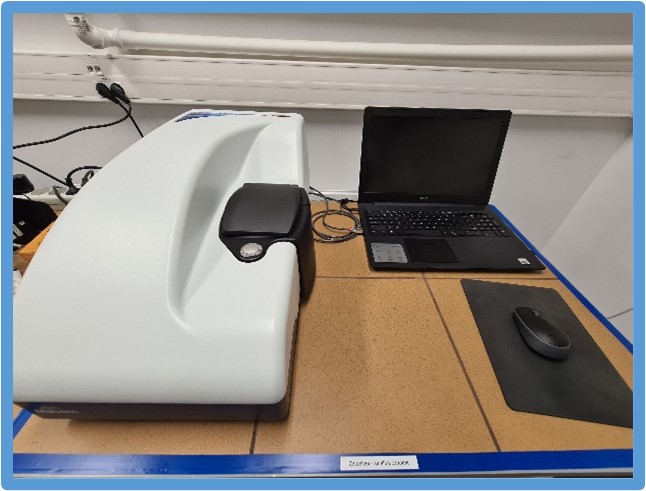
The particle analyser (Zetasizer Nano ZS, Malvern Panalytical) utilizes optical measurement techniques based on light scattering to measure a size distribution (in a range of 0.3 nm to 10 µm), and a zeta potential (in a range of -500 mV to 500 mV) of the diamond particles suspended in liquids. Both quantities are crucial in production, disaggregation, and functionalization of the nanodiamonds. The measurement of the size distribution enables to quickly control parameters and verify results of the ball milling and/or the ultrasonic treatment, while the value of the zeta potential indicates the colloidal stability of the particles in a specific dispersion medium, and provides better understanding of the processes of charge transfer occurring due to the modification of the nanodiamonds’ surface.